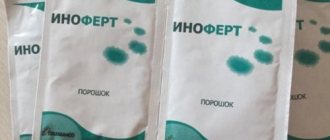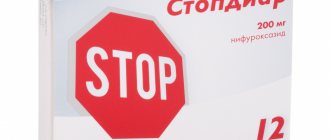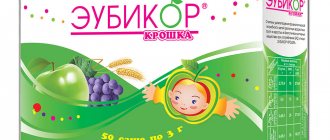Actovegin - description of the drug
Actovegin in ampoules
- a medicine for optimizing metabolism, trophism and tissue regeneration. The drug is produced in Austria, the price for 5 ampoules (5 mg) is 640 rubles, the price for 5 ampoules (10 mg) is 1160 rubles. Externally, the solution for injection is transparent, slightly yellowish, and normally does not contain insoluble particles or sediment.
The product contains a deproteinized hemoderivat obtained from elements of the blood of young cattle. Auxiliary ingredients of the solution are sodium chloride, water. In addition to ampoules, Actovegin is produced in the form of:
- tablets;
- ointments;
- gel.
Since the medicine is created from calf blood, it is akin to the natural environment of the human body, therefore it is approved for use even in children. Hemoderivat is a complex complex of amino acids, nucleotides and other substances valuable to the body, necessary for the normal functioning of the nervous system and blood vessels. The effectiveness of the medicine is confirmed by the experience of doctors and patients, which is why Actovegin in ampoules has been presented on the pharmaceutical market for more than 30 years.
Compound
| Film-coated tablets | 1 table |
| core | |
| active substance: | |
| deproteinized hemoderivative of calf blood | 200 mg |
| excipients: magnesium stearate; povidone-K90; talc; MCC | |
| shell: acacia gum; mountain glycol wax; hypromellose phthalate; diethyl phthalate; quinoline yellow dye, aluminum varnish; macrogol-6000; povidone-K30; sucrose; talc; titanium dioxide |
Action of Actovegin
Intramuscular and intravenous injections of Actovegin are prescribed for the treatment of various pathologies accompanied by the following changes in the body:
- hypoxia (oxygen starvation) in tissues, ischemic processes (consequences of lack of oxygen);
- tissue trophic disorders;
- slow cell regeneration;
- reduced intensity of metabolic processes.
The drug compares favorably with analogues in its high efficiency and minimum side effects. Through dialysis and special filtration, a substance is created whose molecules are very small in size. This allows the drug to penetrate the protective barriers in the body, providing a lot of positive effects.
It is impossible to detect the exact routes and timing of Actovegin’s removal from the body - its components are practically indistinguishable from the natural environment of cells.
After injection into the muscle or venous bloodstream, the active elements almost immediately begin to realize their effects:
WE RECOMMEND THE ARTICLE!
Octolipen helps with the absorption of fats and carbohydrates, gastrointestinal diseases and liver pathologies. Read more >>
- improve the movement and utilization of glucose;
- stimulate rational consumption of nutrients and oxygen by tissues and organs;
- stabilize cell membranes;
- reduce the production of lactates;
- increase tissue resistance to oxygen deficiency in the future;
- accelerate the healing of affected tissues by enhancing the synthesis of collagen fibers.
The result is a powerful antihypoxic effect and improved metabolism at all levels, optimization of blood flow and microcirculation. The amount of amino acids, ATP and other elements in the body increases. The maximum effect is recorded after 2-6 hours
, but the medicine begins to work within 10-30 minutes.
Indications for use
During pregnancy, Actovegin is often prescribed intramuscularly or intravenously.
- this drug helps to increase placental blood flow, after which fetal development occurs at a more intense pace.
Often, mild degrees of fetal underdevelopment (discrepancy between the size of the arms, legs, head, and organs and weeks of gestation) are quickly corrected after a course of drug administration.
Indications for the use of Actovegin injections are very diverse. Among cardiovascular and nervous pathologies they may be:
- ischemic stroke, pre-stroke condition;
- hypertension, hypertensive crises;
- previous head trauma;
- metabolic encephalopathy;
- chronic cerebral circulatory insufficiency;
- encephalopathy;
- vegetative-vascular dystonia;
- endarteritis;
- any conditions accompanied by peripheral vascular disorders - venous, arterial;
- dementia, impaired memory, attention, and other functions of the central nervous system.
For adults and children, the medicine is indicated for use in the presence of large wounds and poorly healing cuts. Elderly people and people who have suffered trauma, surgery, or who are on bed rest are often given Actovegin injections for bedsores. Actovegin is indicated for diabetics to heal ulcers and get rid of trophic disorders. The drug significantly improves the condition of the skin in case of burns, so the indications for use are supplemented by burn disease, radiation, and chemical damage to the skin.
Instructions for use
The drug in this dosage form can only be used as prescribed by a doctor. The solution can be used in different ways - by injection into a vein, into a muscle, by drip with saline, or in combination with other drugs. The solution is ready for use, it can be used in its pure form, but still, to reduce the risk of allergic reactions, many patients are recommended to dilute Actovegin sodium chloride 1:1.
Depending on the volume of the ampoule, the amount of the active component can be 2, 5, 10 ml, while its concentration is always the same - 40 mg/ml.
After opening the ampoule, the solution is taken from it immediately; storage is unacceptable.
If for some reason only part of the solution was used, the remaining drug must be disposed of. Before the first use, you should perform an allergy test - a test injection of 2 ml of the product into the gluteal muscle. In the absence of an immediate reaction (within half an hour), use in the required dose is allowed. The drug is administered only slowly! The application standards are as follows:
- for intramuscular administration - no more than 5 ml/one procedure;
- for intravenous, intra-arterial administration - 10-20 ml of solution on the first day, then 5-10 ml/day, unless a different treatment order is prescribed by the doctor.
10-20 ml of solution per 200-300 ml of 0.9% sodium chloride is injected dropwise, or a glucose solution is used for dilution. The rate of administration is not higher than 2 ml/minute. For some types of cystitis, Actovegin is injected into the urethra 5-10 ml with saline solution. The course of therapy is 10-20 days daily.
Release form
Film-coated tablets, 200 mg. 50 tablets each in dark glass bottles with a screw neck, sealed with aluminum caps with first opening control. 1 fl. placed in a cardboard pack.
In the case of packaging and packaging of the drug at Takeda Pharmaceuticals LLC, Russia: 50 tablets each. in dark glass bottles with a screw neck, sealed with aluminum caps with first opening control. 1 fl. placed in a cardboard pack. Transparent round protective stickers with holographic inscriptions and first-opening control are glued to the pack.
In the case of packaging and/or packaging of the drug at Pharm CJSC - 10, 30, or 50 tablets. in dark glass bottles with a screw neck, sealed with aluminum caps with first opening control. 1 fl. placed in a cardboard pack.
Side effects, contraindications
Typically, injections are not prescribed for children under 3 years of age, but this issue is resolved with a specialist on an individual basis. Contraindications include:
- severe heart failure;
- swelling of the lung tissue;
- urinary retention - complete and partial;
- severe peripheral edema;
- history of allergic reactions to Actovegin.
If the content of sodium or chlorine in the body is high, the drug should be used with caution. Side effects may include skin rash, urticaria, itching, redness of the injection site, headache, abdominal pain, diarrhea, hyperhidrosis, fluid stagnation in the body. Severe allergic reactions, including anaphylaxis, have been observed rarely. But usually the medicine is well tolerated by patients.
[media=
https://youtu.be/5MBs0USgLFI
]
Pharmacokinetics
Using pharmacokinetic methods, it is impossible to study the pharmacokinetic parameters of the drug Actovegin®, since it consists only of physiological components that are usually present in the body.
To date, a decrease in the pharmacological effect of hemoderivatives has not been found in patients with altered pharmacokinetics (for example, hepatic or renal failure, changes in metabolism associated with old age, as well as metabolic characteristics in newborns).
Analogues and other information
Among the exact analogues in action and composition, one can name only Solcoseryl solution (price for 5 ampoules - 680 rubles). Analogues of effect (nootropics, antihypoxants) are given below.
| A drug | Compound | Price, rubles |
| Chime | Dipyridamole | 620 |
| Nootropil | Piracetam | 340 |
| Tanakan | Ginkgo biloba | 650 |
| Cinnarizine | Cinnarizine | 120 |
| Mexidol | Ethylmethylhydroxypyridine succinate | 460 |
| Piracetam | Piracetam | 50 |
With a long course of therapy, it is necessary to monitor the levels of electrolytes in the blood, as well as the hematocrit.
Information on overdose is not provided, but if too high doses of the drug are used, side effects may increase.
What is better Actovegin or Cortexin?
The drugs are of animal origin: Actovegin is obtained from the blood of calves, and Cortexin is obtained from the polypeptides of their brain. For cognitive impairment, both are used, but beyond that the application paths diverge. The former improves peripheral circulation, protects nerve fibers in diabetes and helps with wounds, while the latter is prescribed for a wide range of disorders, from traumatic brain injury to epilepsy and developmental delays. It is not necessary to give injections with Actovegin: it can be taken in tablets. Another medication is administered only intramuscularly.
Cortexin is used exclusively for the treatment of children.
In terms of the number of contraindications, Cortexin wins: a blood-based drug cannot be administered if there is fluid retention in the body and heart failure, and tablets are not suitable for lactose intolerance. On the other hand, the competitor has fewer side effects: most often it causes allergic reactions, while the drug from the cerebral cortex has an stimulating effect and increases the pulse. Actovegin is used in combination with other medications; Cortexin can be prescribed alone; Since the mechanisms of action of both are somewhat different, sometimes they are combined.
conclusions
At the moment, Actovegin has not undergone a single study according to the GHP rules (the international code of quality medical practice that guides scientists in conducting clinical trials). But at the same time, the company producing the drug does not set such a goal, since a strong evidence base is not required for the fish to enter the main market (CIS countries).
According to studies of medical records of patients with hypertension who were hospitalized, it was revealed that the percentage of money spent on treatment with Actovegin averaged 17% of the total amount. This is irrational spending on a drug without an evidence base for hypertension and concomitant conditions, and its inclusion in the prescription lists is impractical.





